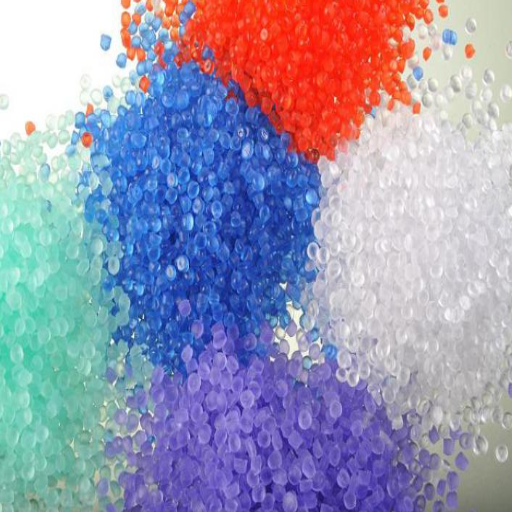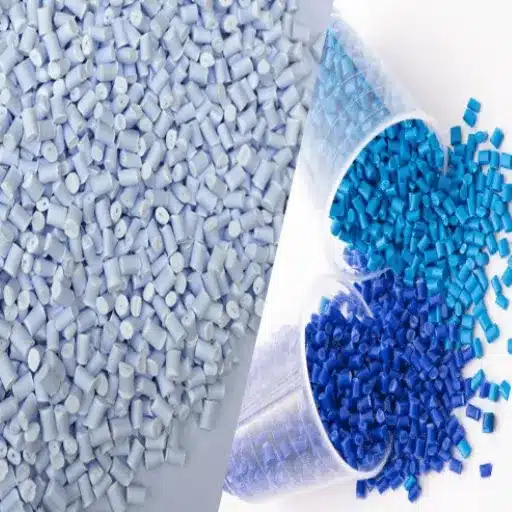It is polyvinyl chloride, commonly known as PVC, one of the most versatile materials used by industries worldwide. From construction to plumbing, fashion, and healthcare, the uses of PVC are endless. Amidst the surge in demand, a common question arises: What distinguishes it as PVC? Is it a thermoplastic, and what does that entail in terms of its properties or applications? The article explores such questions to provide readers with a clear understanding of PVC classification and how it behaves under varying conditions, accompanied by the benefits that arise from its unique properties. Therefore, you will gain insight that helps manufacturers and innovators understand why PVC has remained a preferred material.
Introduction to PVC and Thermoplastics
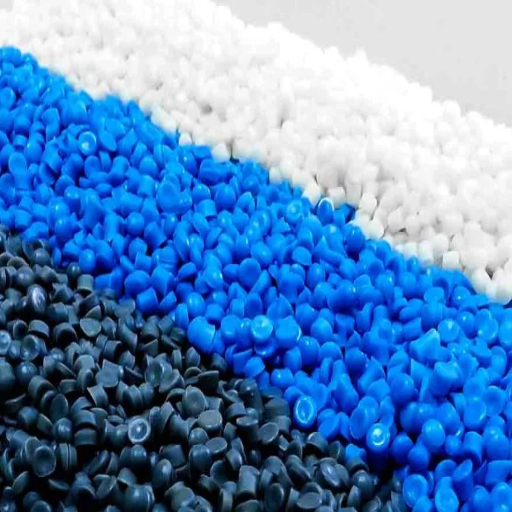
What is PVC?
Polyvinyl chloride is the commonly used present name for PVC. One of the most widely used synthetic polymers in the world is PVC, with wide applications. It is thermoplastic in nature, so it becomes soft when heated and hard when cooled. It allows repeated remolding. Accordingly, PVC can be a versatile material with various applications. PVC is made up of 57% chloride (from common salt) and 43% carbon (mainly from hydrocarbon sources such as oil or natural gas) and is known to possess the properties of lasting and stability, along with cost efficiency. Depending on its chemical treatment, this composition imparts an inherent balance of rigidity and flexibility to the material.
The two main types of PVC are rigid and flexible. Rigid PVC, also known as uPVC (unplasticized polyvinyl chloride), is a strong material used widely in construction, such as pipes, window frames, and roofing sheets. In contrast, soft PVC is made by adding plasticizers, which make the material soft and supple, and is used for wires and cable covers, flooring, and medical tubing. Beyond these properties, PVC is also resistant to chemical attack, water, and atmospheric exposure, making it a promising construction material for outdoor and industrial applications.
Alongside their functional properties, PVCs lend some sustainability merit when handled adequately: they are recyclable into various forms to minimize waste, use comparatively less energy and resources than their alternatives, making them an eco-friendlier option in numerous areas. With such properties, PVC has acquired a prominent role across the spectrum of modern manufacturing and infrastructure, testifying to its importance as a material that combines performance, versatility, and economy.
Defining Thermoplastics
Thermoplastics are a type of polymer that becomes pliable or moldable at a specific elevated temperature and solidifies upon cooling. This property enables them to be reheated, reshaped, and reused multiple times without significant degradation, making them highly versatile and sustainable for various industrial applications. Polyethylene (PE), polypropylene (PP), polyvinyl chloride (PVC), and polystyrene (PS) are some of the most common types of thermoplastics, each with special characteristics suited for specific uses.
Another significant advantage of thermoplastics concerns their adaptability: polyethylene resists chemicals and is hence useful in packaging, pipes, and insulation. Polypropylene is renowned for its toughness and is therefore widely used in automotive components, textiles, and medical instruments. Similarly, PVC finds applications in construction, such as pipes, windows, and flooring, due to its resistance to water and chemicals.
Thermoplastics, on the other hand, provide lightweight solutions of superior performance for the aerospace and electronic industries. Newer thermoplastic grades, with the development of manufacturing techniques, offer improved heat resistance, UV stability, and impact strength, thereby expanding their application spectrum. Moreover, since the materials are recyclable, they contribute to the global sustainability drive by reducing the use of resources and, consequently, the environmental impact.
Comparison between Thermoplastics and Thermosetting Plastics
Thermoplastics and thermosetting plastics differ significantly in their chemical structure, as well as in their properties and applications, with each finding use in manufacturing and industry in specific ways.
Thermoplastics are polymers that become soft and moldable upon heating and then solidify upon cooling. This reversibility is due to their linear or lightly branched molecular structure, which allows bonds between molecules to form and break multiple times. These may include polyethylene (PE), polypropylene (PP), polycarbonate (PC), etc. Thermoplastics have been widely used in applications requiring flexibility and recyclability. For example, polyethylene is commonly used for packaging, whereas polycarbonate finds applications in optical lenses due to its high impact strength and transparency. Recent advancements have made some thermoplastics more environmentally resistant, making them suitable for long-term outdoor applications.
Unlike thermoplastics, however, thermosetting plastics harden permanently when heated and injected for the first time. This is because, upon heating, thermosetting plastics undergo a chemical curing reaction, forming a rigid 3D network of bonds that makes it impossible to melt and reshape them again. Examples of thermosetting plastics include epoxy resins, phenolic resins, and melamine formaldehyde; their heat, chemical, and mechanical resistance find applications as electrical insulators, automotive parts, and adhesives. Recent developments have considered these thermosetting plastics, where their durability can be improved while minimizing environmental impact through bio-based formulations.
From a sustainability viewpoint, thermoplastics tend to fare better than thermosetting plastics, as they are recyclable and thus contribute to waste reduction and resource conservation. Meanwhile, thermosetting plastics are now being researched in areas such as chemical recycling or as a matrix for composite materials, which makes them less environmentally friendly. Together, they represent the technical thresholds and versatility of polymer science that cater to industries ranging from automotive and aerospace to consumer goods and sustainability innovations.
Properties of PVC
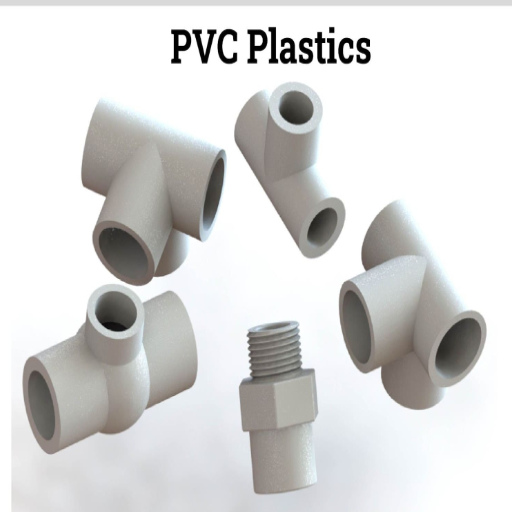
Physical features of PVC
Polyvinyl chloride (PVC) is one of the most versatile thermoplastic materials, widely recognized for its durability and adaptability. Its physical characteristics lend themselves to use in various industries:
Density: Compared to most plastics, pvc thermoplastic is very dense, with a density ranging from 1.3 to 1.45 g/cm^3. Due to its high density, it lends rigidity and strength to construction materials such as pipes and window frames.
Mechanical Strength: PVC offers exceptional tensile strength, ranging between 30 and 50 MPa, allowing it to withstand considerable stress and pressure in heavy applications, such as plumbing and industrial equipment.
Thermal Stability: Regular PVC can withstand a temperature of 60°C under continuous operation, but can be thermally stabilized for much higher temperatures, allowing it to be used in harsher environments.
Impact Resistance: Rigid PVC has an average resistance to impact; however, by modifying it with impact modifiers, it can be improved to provide high toughness when subjected to mechanical forces.
Flame Resistance: As a flame-retardant material, the high chlorine content of PVC resists ignition; therefore, it is used in electrical insulation and building material applications that require enhanced fire safety standards.
Chemical Resistance: PVC exhibits excellent resistance to acids, alkalis, oils, and fats. This extends its utility to chemical processing, food packaging, and medical equipment.
Flexibility: Adding plasticizers to flexible PVC gives it the ability to bend and conform to various uses, such as cables, hoses, and floor tiles.
Thus, the combination of mechanical strength, adaptability, and chemical resistance enabled PVC to become a significant material of construction, medical, automotive, and other industries.
Chemical Resistance and Durability
PVC is appreciated for its excellent resistance to chemicals and durability, making it suitable for many applications. It resists acids, alkalis, and organic solvents well, allowing it to perform for a significant period even in harsh chemical environments. It plays a pivotal role in the manufacture of chemical storage tanks and piping systems that are frequently exposed to harsh substances.
Furthermore, durability affords PVC extended life and endurance against wear and tear, moisture, and varying climatic conditions. These enable, for instance, PVC pipes to stay functional for about 50 years or even more, thereby minimizing maintenance costs and having a considerably lesser impact on the environment. Its character, when aided by additives that act as stabilizers against UV, further promises its use for applications involving outdoor exposure, like window frames and roofing membranes. The synergy between chemical resistance and structural revival principles keeps PVC as the backbone of sustainable and long-term solutions.
Flexible PVC vs. Rigid PVC
Flexible and rigid PVC coexist, serving distinct purposes due to their unique properties. Softened through the application of plasticizers, flexible PVC is extraordinarily adaptable and durable. This material is typically used in electrical cable insulation, medical tubing, and flooring due to its properties, including pliability, abrasion resistance, and the ability to withstand harsh environmental conditions. Therefore, it can maintain an ideal balance of toughness and elasticity in dynamic or high-stress applications.
Rigid PVC, also known as uPVC (unplasticized PVC), has its advantages, including strength, stiffness, and resistance to chemical degradation. It is highly regarded in the construction industry for its ability to supply extended service life and great structural integrity to products such as pipes, windows, and door frames. Unlike flexible PVC, which does not consist of any plasticizers, it resists warping or deformation during use. Moreover, it resists moisture and UV rays, making it ideal for outdoor and plumbing purposes.
From reducing material costs to enhancing operational efficiency and facilitating sustainability, both forms of PVC exhibit great potentials. With further modification by the use of additives, they can be designed to meet specific technical requirements such as flame retardation, thermal stability, or impact strength. It is through the use of these materials in industry-specific applications that highlight their versatility and ability to tackle a range of challenges in today’s manufacturing and construction industries.
Applications of PVC
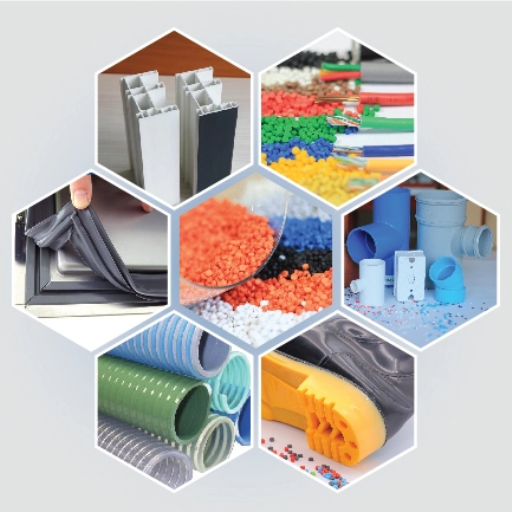
Common Uses in Construction
In the construction world, PVC is a critical material due to its properties, including durability, affordability, and flexibility. It is primarily used for making pipes and fittings, offering excellent resistance to corrosion, chemical damage, and environmental stress. These properties make it a good material for water supply systems, sewage infrastructure, and drainage solutions. Aside from water supply systems and drainage, PVC is also used to manufacture window frames and profiles, where the material is utilized for its low thermal conductivity to promote better energy efficiency in buildings.
Some other worth-mentioning uses of PVC in construction are floorings and wall coverings. PVC materials can mimic the appearance of wood, stone, or different textures while also offering enhanced water and stain resistance, making them suitable for use in both residential and commercial areas. It is also a favorite material for roofing membranes, as PVC offers good waterproofing, UV resistance, and durability, ensuring a long life for roofs. Its great adaptability to meet the most uncompromising safety and performance specifications is thus the reason why PVC continues to hold an essential position in current construction practices.
The electrical and plumbing applications
Unique combinations of properties such as durability, flexibility, resistance to corrosion, and chemical injuries make PVC the material of choice in electrical and plumbing systems. PVC conduit systems protect electrical wiring from moisture, heat, and mechanical stresses. The PVC conduit is lightweight, easy to install, and resistant to flame propagation, improving safety. Additionally, PVC is nonconductive; therefore, the risks of electrical hazards are diminished, making PVC an essential choice for residential, commercial, and industrial buildings.
PVC pipes in plumbing systems serve well to transport water and other fluids. They resist rust and scaling from aging, promising long service life with lesser maintenance. PV has demonstrated better performance under high-pressure and high-temperature conditions than traditional materials, such as metals, which degrade within a short period of application. Moreover, technological enhancement in PVC pipes like that in chlorinated PVC (CPVC) has made the pipe suitable for use in hot water systems where it sustains temperatures higher than PVC. Regardless of the type of potable water delivery, drainage, or sewage systems, PVC, with all its upgraded features, ensures a trouble-free performance while conforming to environmental safety codes.
The versatility of PVC, combined with its affordability and ease of installation, makes it indispensable for providing modern electrical and plumbing infrastructures. With the growing emphasis on sustainable construction practices, new PVC formulations, such as recyclable and low-impact compositions, have emerged, supporting the movement toward eco-conscious development and future-ready working systems. This flexibility only further assures PVC as a material for improving the efficiency and reliability of building services.
Consumer Goods and Packaging
Versatility and efficiency still make PVC the leading material in consumer goods and packaging. The material’s lightness, durability, and cost-effectiveness have all worked against consumer adoption for the mass production of everyday objects, such as credit cards, bottles, and shrink wraps. This material is best because it creates an airtight seal and protects the contents from contamination during food and drink packaging. Moreover, PVC facilitates creative designs that not only improve the product appeal but also comply with stringent safety and quality regulations. With technological advancement, PVC packaging is evolving toward sustainability, emphasizing greater recyclability and less material waste. These characteristics primarily highlight the significant contribution made by PVC to consumer satisfaction and environmental awareness.
PVC Recycling and Sustainability
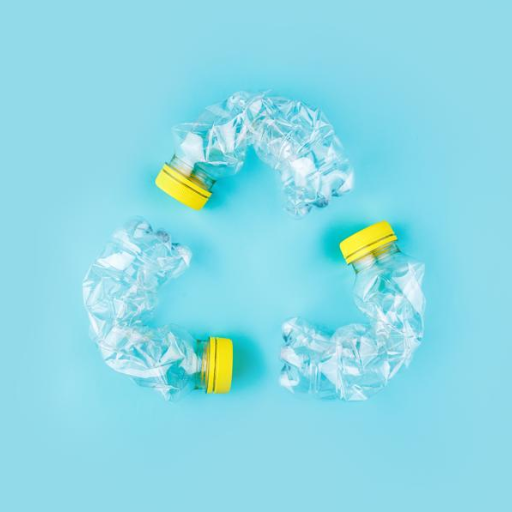
Is PVC Recyclable?
PVC, or polyvinyl chloride, is recyclable; however, the process requires specialized infrastructure and practices. Mechanical recycling is the most common method used, where PVC waste is ground into smaller pieces, cleaned, and reprocessed into new products. According to existing industry data, approximately 40% of PVC waste from Europe is recycled annually, driven by increasing momentum in sustainable practices. Another option is now available with chemical recycling, which breaks PVC back into its original chemical components for reuse and could thus serve as the backbone of efficient PVC recycling shortly.
Some issues that affect the recycling of PVC include contamination of PVC waste with other materials, which complicates the recycling process. The additives present in many PVC products, such as plasticizers, can also affect the recyclability of the product. To mitigate this problem, producers are increasingly designing PVC products with recycling in mind, using fewer additives to create purer materials. These developments ensure that PVC remains on track with global sustainability goals and positions it to join the circular economy model, thereby reducing its environmental impact.
Methods to Recycle PVC
Technically, PVC recycling can be divided into two main paths: mechanical and chemical recycling, each with unique benefits in terms of sustainability and material recovery.
Mechanical Recycling: Mechanical recycling is the most widely used method of PVC recycling, involving the collection, sorting, cleaning, and reprocessing of PVC waste into new products. It suits relatively clean and uncontaminated waste streams of PVC, such as PVC from pipes, window profiles, and flooring. The evolution of sorting technologies, based on, among other things, near-infrared (NIR) sensors, has improved the separation of PVC from other mixed plastics, thereby increasing recycling rates. According to industry reports, mechanical recycling of PVC has already diverted a significant percentage from landfills, with recycling facilities now achieving increasingly higher levels of material recovery.
Chemical Recycling: Chemical recycling is an advanced approach to PVC recycling; in general, complex processes occur that convert PVC at the molecular level, commonly through pyrolysis or hydrolysis, into its constituent chemicals. It has proved effective for contaminated or mixed PVC waste that cannot be subjected to mechanical recycling. Some of the significant advances gained in chemical recycling lie in the recovery of chlorine and of ethylene and vinyl chloride monomers of virgin quality. These recovered materials are then used to produce new PVC, supporting a closed-loop system. Preliminary industrial trials appear to demonstrate that this approach can effectively treat high volumes of PVC waste that was previously deemed non-recyclable.
What’s New in PVC Recycling: Recent innovations have aimed to integrate mechanical and chemical recycling for enhanced material recovery. These hybrid methods thus combine two methods, explicitly focusing on complex waste streams to achieve maximum resource efficiency. Additionally, the PVC industry is developing new investments and partnerships to advance this process further. Internationally, recycling rates of PVC are expected to steadily improve over the coming decade as government regulations and corporate commitments continue to drive the industry toward sustainable practices. Alongside this increase in recycling, there is a continued development of design considerations for PVC products intended for later-stage reuse, which will continue to lay the foundation for a clean industry.
Environmental Impact and Sustainability Concerns
The environmental impact of PVC highlights a series of challenges ahead that still require sustainability endeavors. One of the pressing concerns is the production process, which, through the use of chlorine and fossil fuels, generates greenhouse gas emissions that contribute to global warming. The release of dioxins during manufacturing and the incineration of PVC into the environment became a concern for environmentalists. These pollutants threaten air quality and pose dangers to both ecosystems and human health.
On the sustainability side, progress is being made to address these concerns. These advances in mechanical and chemical recycling techniques significantly help reduce the ecological footprint of PVC. Recent industry data indicate that countries integrating advanced recycling systems have witnessed significant PVC recycling rates, with several regions surpassing 40%. Furthermore, life-cycle assessments reveal that using recycled PVC in the fabrication of new products will reduce CO2 emissions by 90%.
Still, the situation is not ideal. A significant portion of PVC waste still ends up in landfills, especially in underrepresented areas of recycling. Thus, companies and governments are forging ahead in establishing closed-loop systems that put circular material usage on the agenda. This also paves the way for a shift toward eco-friendly additives and the sustainable sourcing of raw materials.
These innovative solutions, together with strict environmental regulations, open a new door to cleaner pathways for PVC. However, there is still much work ahead, requiring continuous investment, research, and worldwide collaboration to overcome the remaining sustainability challenges and achieve longer-term environmental targets.
Choosing the Right Material
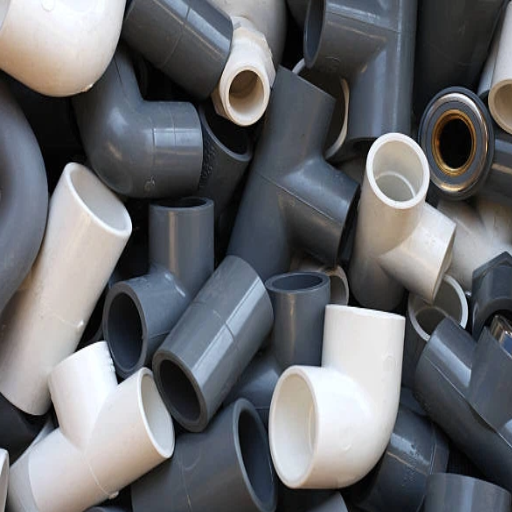
When to Use PVC vs Polypropylene
I always consider the project’s unique requirements and the material’s peculiarities when choosing between PVC and polypropylene. PVC, or polyvinyl chloride, is incredibly versatile and well-suited for applications that require durability, chemical resistance, and rigidity. PVC finds excellent usage in construction materials, piping, tubing, and electrical insulation. I would choose PVC every time for projects that involve severe environmental conditions or prolonged exposure to the outdoors, due to its excellent weathering and UV resistance. PVC can be manipulated to acquire other properties by the addition of suitable additives, making it softer, more flexible, or more impact-resistant as needed.
Polypropylene, on the other hand, is suitable for lightweight applications and inexpensive solutions requiring excellent resistance to chemicals and thermal stability. The ability to resist deformation at high temperatures enables it to be used extensively in packaging, automotive parts, and consumer products. This material also works exceptionally well for food-safe containers and medical supplies, given its non-toxic and odourless nature. Another plus is its recyclability, making it an environmentally conscious material choice among certain types of projects.
Ultimately, the decision is mainly dependent on the specific requirements of the application. Where strength and stability are paramount, PVC is the usual choice; in applications that prioritize lightweightness, cost, or better recyclability, polypropylene is a better fit. Environmental conditions, load, and service requirements are therefore evaluated to guide me in selecting the appropriate material for any project.
Factors to Consider in Material Selection
Several factors must be carefully analyzed when selecting materials for a project to ensure the best choice for the application. These include:
Mechanical Properties: Strength, durability, and flexibility of materials should be understood. For example, if the specific application requires loads heavier than usual or sudden forces applied, tensile strength and impact resistance are of primary importance. Lightweight materials, such as polypropylene, may become desirable when weight reduction is essential, whereas PVC may be favored in environments that require a high level of structural integrity.
Chemical Resistance: Depending on their nature, materials might be exposed to harsh chemicals, oils, or dampness; thus, a resistance factor to degradation is essential. PVC exhibits excellent resistance to corrosive compounds, making it particularly useful for applications involving chemical storage. In contrast, polypropylene fares very well against oils and acids, rendering it a versatile material.
Temperature Tolerance: If an application environment is subjected to extremely hot or cold conditions, temperature tolerance becomes a crucial consideration in material testing. PVC outperforms numerous materials in terms of its performance at both low and high temperatures, making it a suitable choice for applications in outdoor and high-temperature environments. On the other hand, polypropylene offers thermoplastic flexibility over a moderate temperature range.
Environmental Impact: Choosing environmentally friendly materials has become a crucial issue today. Evaluating recyclability and ecological footprint has led industries toward eco-friendly solutions. Polypropylene has an edge here due to its greater ease of recycling and environmentally friendly attributes, thus paving the way for projects with a focus on reducing waste.
Cost Efficiency: Budgeting is a key factor that cannot be overlooked in material selection. Maximize the utility of each material within its given budget to ensure the project’s feasibility. PVC materials tend to be preferentially used in larger industrial applications due to their lower cost; however, the low weight and recyclability of polypropylene could ultimately yield economic benefits in the long run.
Application-Specific Requirements: On the other hand, some unique requirements exist in every project, such as aesthetics, compatibility with different materials, or ease of installation. This makes it worthwhile to choose materials that meet these needs because it will enhance efficiency and create functionality designed for the intended use.
Teams can analyze these factors to make informed choices, ensuring that the selected materials not only meet but also surpass the critical requirements for performance, environmental, and operational demands in every primary industry.
Future Trends in PVC Applications
From my perspective, the future of PVC applications will be dominated by the material’s versatility, driving innovations in many fields. One major trend will be sustainability. Manufacturers are now working to develop green PVC alternatives, such as bio-based or recycled PVC, in response to the growing demand for sustainable solutions. The recent improvements in production methods have also enabled reduced energy consumption and emissions, making the use of PVC less damaging to the environment.
Consider another development, namely the integration of innovative technologies with PVC-based products. PVC materials have been improved from bright windows to pipes with adaptations to promote function and efficiency. Intelligent PVC piping for tracking water flow or detecting leaks in real-time would significantly boost utility and infrastructure cost savings, as well as improve resource management.
Applications of PVC are being developed for the medical, construction, and renewable energy markets. The new application of antimicrobial PVC for medical devices and lightweight, strong panels for solar energy systems demonstrates that PVC is on its way to becoming important in emerging industries. I am confident that with continuous research and development, PVC will continue to drive innovations in numerous industries, aligning with future sustainability goals.
Reference Sources
-
Comprehensive Guide on Polyvinyl Chloride (PVC) – SpecialChem
This guide provides an overview of PVC as a high-strength thermoplastic material and its diverse applications. -
Properties and Applications of PVC Plastic Sheet – Piedmont Plastics
A detailed explanation of PVC’s thermoplastic nature, including its ability to be reshaped under heat. -
Polyvinyl Chloride – Wikipedia
A comprehensive resource on PVC, covering its properties, types, and thermoplastic characteristics. -
Polyvinyl Chloride (PVC): Characteristics and Uses – Chandra Asri
This article highlights the key characteristics of PVC, including its durability, lightweight nature, and economic benefits. -
Everyday Uses for PVC Plastic – Preferred Plastics
A resource detailing the practical applications of rigid PVC in construction, siding, and more. - View PC Plastic Pellets Manufacturers in China
Frequently Asked Questions (FAQs)
What does the abbreviation PVC mean, and how is it produced?
PVC is an acronym for polyvinyl chloride, a type of plastic widely used because it is a thermoplastic polymer whose monomer is derived from vinyl chloride. The production process entails polymerization, a process in which the monomer is converted into a resin form. There are various types of PVC available on the market, including flexible polyvinyl chloride and rigid polyvinyl chloride. PVC has numerous applications, including the manufacture of PVC pipes in the construction industry and in the healthcare sector, where it is used to make blood bags and other medical tools. It is present on the shelves of manufacturers thanks to its affordable price and durability, which enables it to last longer in many industries.
What are the properties of PVC as a thermoplastic?
The physical properties of PVC include corrosion resistance and low brittleness, which set it apart from other plastic materials. PVC also has excellent insulation properties, which is why it is widely used in the manufacture of electrical cables and other safety-critical applications. Furthermore, the addition of plasticizers can enhance the flexibility of PVC, enabling it to be used in a wide range of products. This also means there is a lot of room for modification of these properties since it is an organic structure that is unlike metal.
Is PVC recyclable, and what are the trends in PVC recycling?
PVC is made from polymers such as polyvinyl chloride (PVC) and is recyclable, which means that waste LDPE, when correctly reprocessed, can be easily used to create new products from the same or other materials after consumption. The reason for this is to prevent the disposal of PVC without proper cleanup, which is effective and should eliminate many types of PVC. Instead, they should try to include white and grey PVC, as this can help save the market, as other colors cannot be recycled. As with any other process, one that is initiated by the influence of some knowledge, and then proceeds through a logical process, it is through waste that a good practical potential is ultimately realized.
What are the uses and trends of flexible PVC?
Flex PVC refers to plastic that is malleable in its raw state. Due to its valuable properties, such as its flexibility, PVC should be used in various applications that require protection of its volume or shape. For example, PVC is widely used in the manufacture of materials such as soft or flexible flooring and other plastic products. The flexible location PVC is used in medical devices, where tubing and bags are required, as they need to be purposefully flexible. It is also used for consumer packaging.
What is CPVC, and why is it used?
Chlorinated Polyvinyl Chloride, commonly referred to as CPVC, is a heat-smoothing plastic obtained from regular PVC by chlorination of the polymer. CPVC is characterized by an increase in heat resistance and a larger range of chemical resistance compared to standard PVC materials. Hence, it is the material of choice in applications involving hot water and in areas where harsh chemicals are commonly used. The fact is that Chlorine in CPVC also increases its resistance to fire, making CPVC an ideal material for construction and piping. These features make it a favorable material for pipelines and various industrial processes.
Are there any environmental risks associated with the use of PVC?
In general, the most significant environmental criticism of PVC is that it emits toxic substances during both the manufacturing and disposal processes. For example, it is known that exposure to vinyl chloride fumes may induce cancer, and crafting an entire article about the health effects of PVC requires several more months. In addition, the use of most recycled PVC products is safer than other sustainable techniques, such as ground bars, PVC corners, protective PVC films, and many more. In the same regard, using CPVC pipes and PVC fittings can minimize the risk of degradation and exposure to harmful chemicals. It is essential to adopt strategies that will help reduce the impact of PVC utilization on the land.

